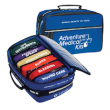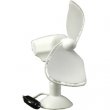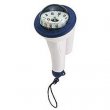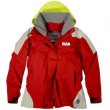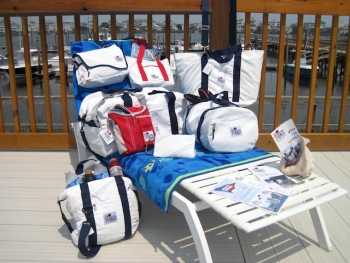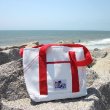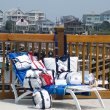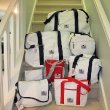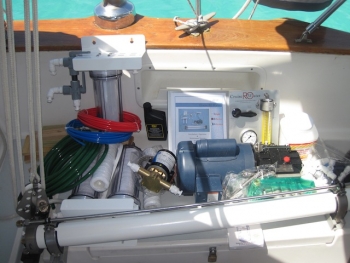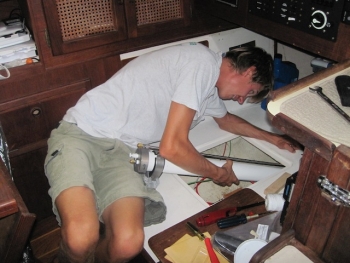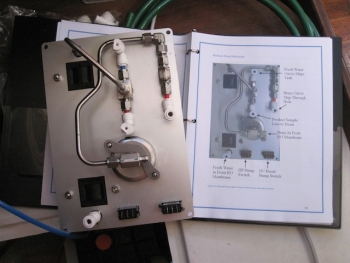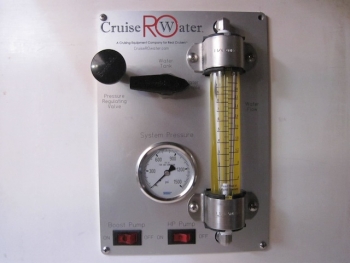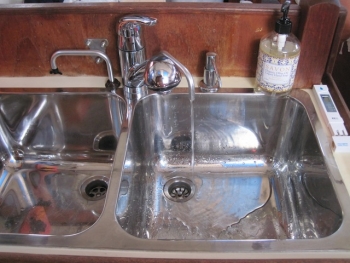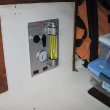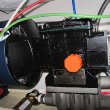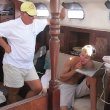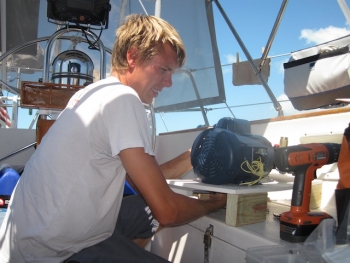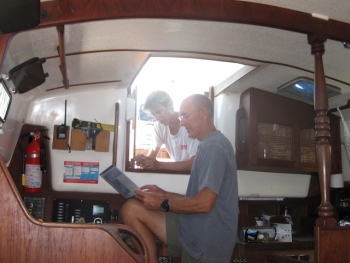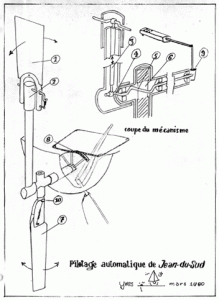Since we’re land based sailors for the time being, we thought we’d release some cruising gear that should be put to good use rather than being stored in our home.
If you’re interested in anything below, would like to see more pictures or have questions, please let us know. (We will arrange sale and shipping via PayPal.)
- Adventure Medical Marine 1000 Kit with supplemental Suture/Syringe Kit, includes the book “A comprehensive guide to marine medicine” – $300
- Jabsco 12v Electric Diaphragm Waste Pump – $100
(3) Caframo clip-on fans, white. These move the most air for the least amount of 12 volt power consumption – $30 each or All for $80- Henry Lloyd Women’s XS Dark Blue Sailing Bib, Tags still on – $75
- SLAM Women’s Foul Weather Racing Jacket XS, never worn with tags – $150
- SLAM women’s foul weather racing jacket has laminated nylon taslon fabric, waterproof and breathable. Thermo-taped seams, collar and inside pockets with pile lining, cuffs and elbows ergonomically cut, tuck-away hood adjustable with just one hand, emergency whistle.
- Ample Power Smart Alternator Regulator V.2 – $30
- Handheld Garmin GPS Map 76 – $85
- New Maretron NMEA 2000 Micro Tee – $20
- Plastimo IRIS 1oo Hand Bearing Compass – $100
- Globalsat USB GPS Receiver – $20
- (2) Labcraft 12V mounted strip light, Can take 3, 1x8W fluorescent tubes, operate with 1, 2 or 3 bulbs installed for prefered light and power consumption level – $20 each or $35 for both
- Blue Seas ST Blade Fuse Box 6 circuit, new without packaging – $35
- Blue Seas dual circuit plus battery combiner switch – $35
- Scandvik bulkhead swivel shower head holder – $15
- Scandvik Euro style shower sprayer head (Note: Item is the sprayer head only, not full shower box as pic shows)- $10
Harken Big Bullet Block w/ shackle and becket – (Sheave dia. (in) 1 1/2 Length (in.) 4 Weight (oz.) 2.25 Max. line dia. (in.) 3/8 Shackle pi dia. (in.) 3/16 Max. working load (lb.) 300 Breaking load (lb) 2000) – $15
Hope you all enjoyed a restful weekend.





